35.990365, -78.899442
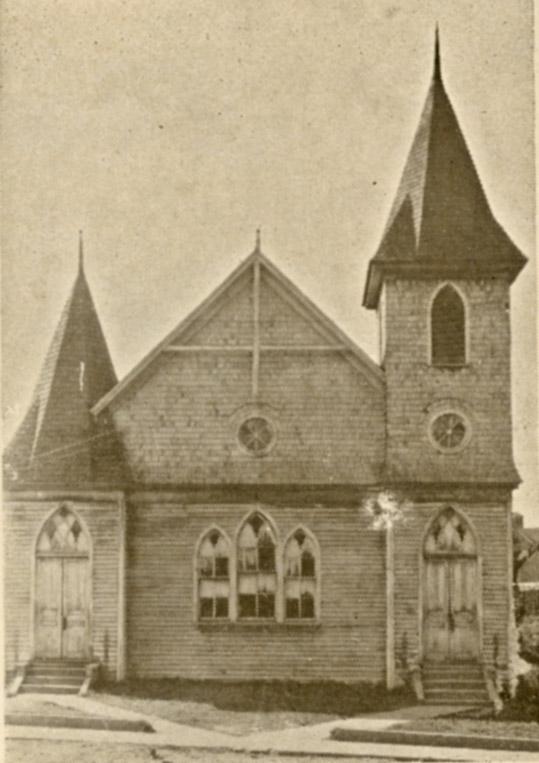
Looking west at Mt. Vernon and South Queen Sts., 1922
(Courtesy Duke Rare Book and Manuscript Collection / Digital Durham)
The Mount Vernon Baptist Church was established in 1880 on 'Ramsey Hill' by Pastor JBK Butler.
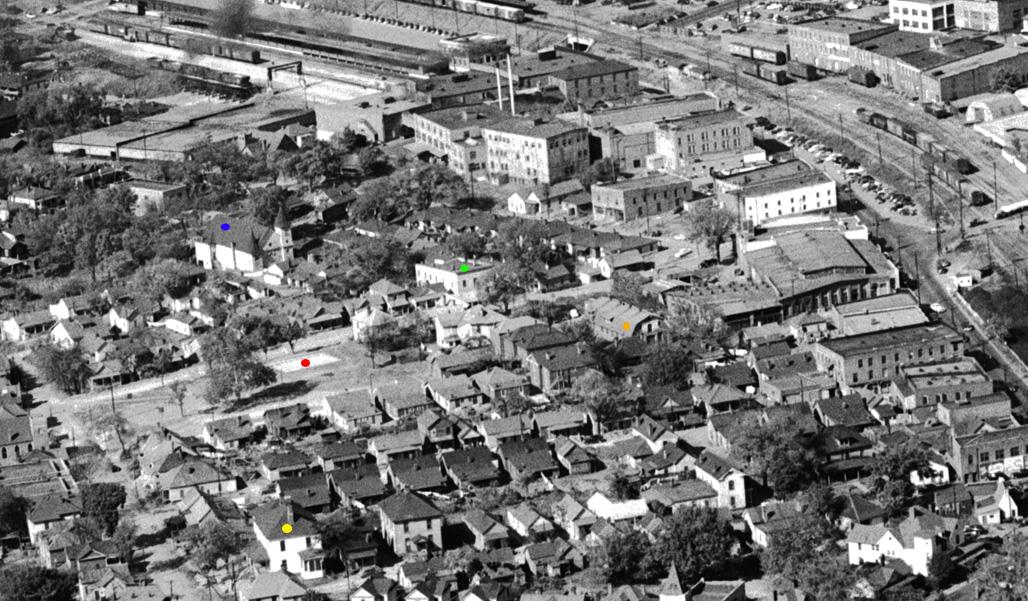
An aerial picture (mid-1940s) showing several locations I'm posting on this week.
Yellow - Original Lincoln Hospital
Red - Site of original Whitted School / Park
Orange - Berry Company
Green - Jones Hotel
Blue - Original Mt. Vernon Baptist Church
(Original photo courtesy The Herald-Sun Newspaper)
I have little information about the history of the church - it appears that the wood frame structure at Mt. Vernon and South Queen Sts. was abandoned by the 1940s, when a new brick masonry structure, still in use, was built at 1007 Pine (South Roxboro) St. in 1940.
The original church became one of those ruins that may be called romantic or blighted, depending upon person, day, mood, and what's at stake.
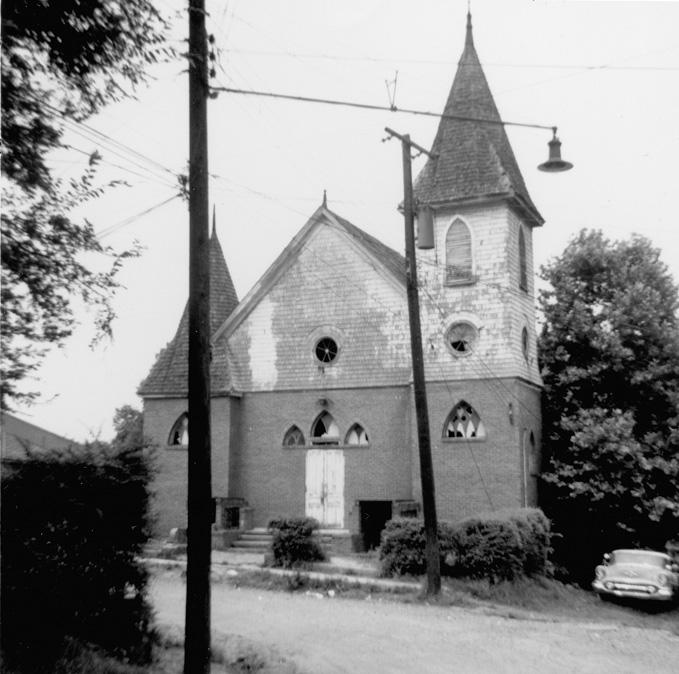
504 South Queen St., July 1965.
(Courtesy Durham County Library / North Carolina Collection)
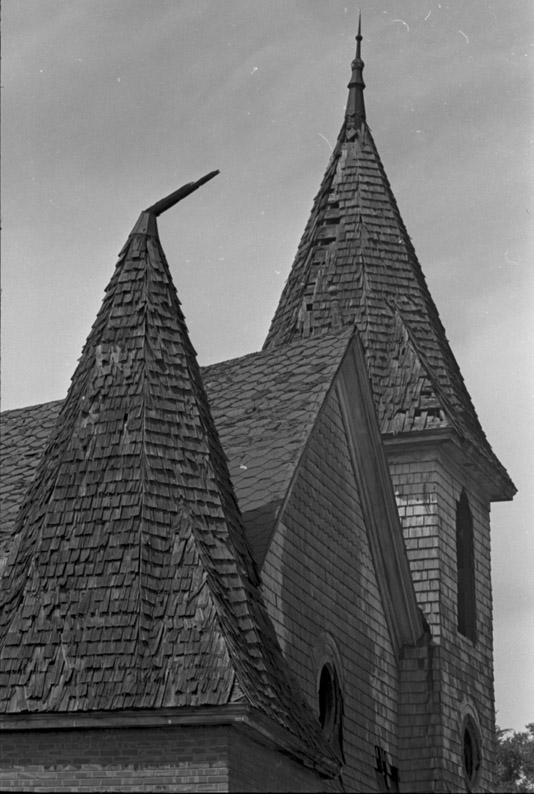
Steeple of original Mt. Vernon Baptist, 05.04.69.
(Courtesy The Herald-Sun Newspaper)
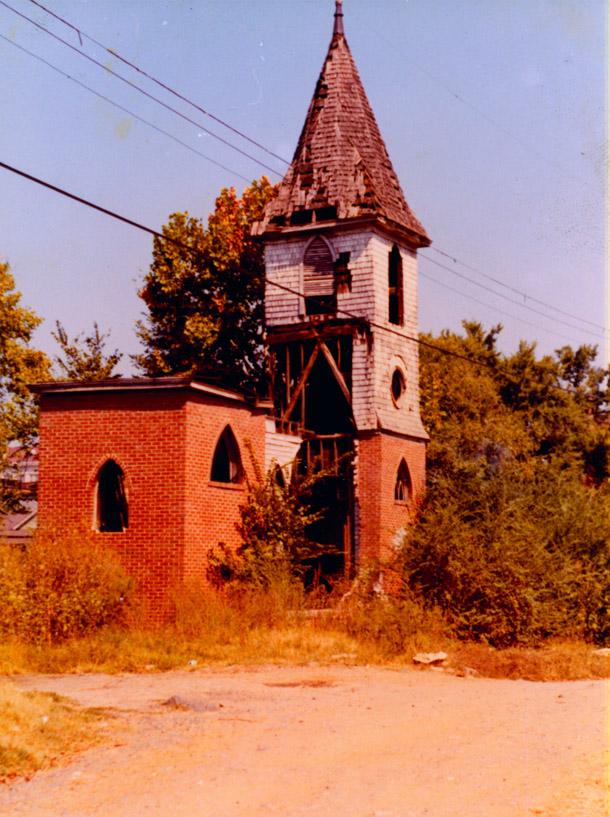
Remains of Mt. Vernon Baptist ~1970.
(Courtesy Durham County Library / North Carolina Collection)
The remains of the structure were taken and demolished by urban renewal. The original location is now part of the Rick Hendrick Chevrolet parking lot.
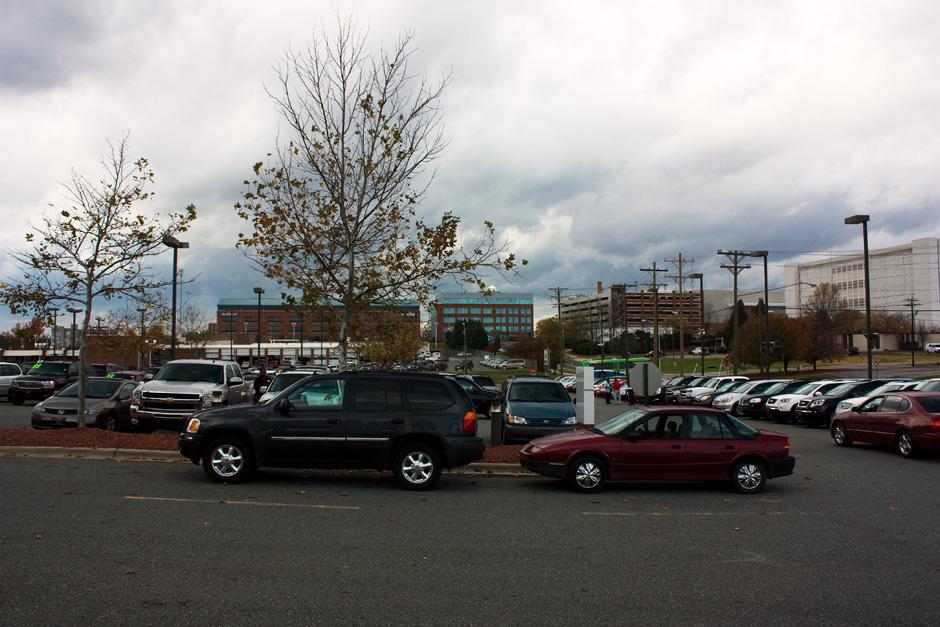
Site of the original Mt. Vernon Baptist Church, 11.15.08
Find this spot on a Google Map.
35.990365 -78.899442

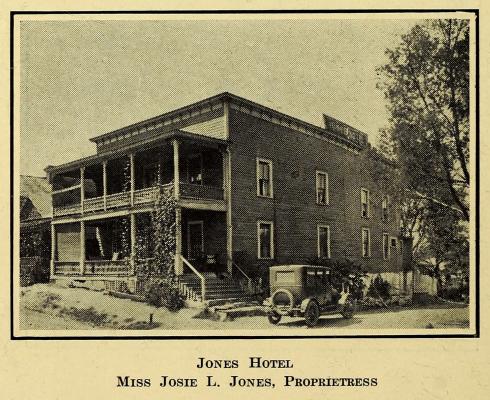
Comments
Submitted by Andrew Edmonds (not verified) on Sat, 3/6/2010 - 8:46pm
From the Mount Vernon Baptist Church website:
Mount Vernon Baptist Church was begun when the state of North Carolina and the nation were in the Populist era; a time in our country's history when the Populist Party, a political party was strongly advocating such things as government control of certain industries, the levying of income tax and the limitation of private ownership of land. This was more than a decade before North Carolina Mutual Life Insurance Company was founded and a quarter of a century before James E. Shepard would begin what is now known as North Carolina Central University. When the church was begun, Frederick Douglas had been dead less than two years and Booker T. Washington was not yet nationally known. The United States was fast becoming an industrial giant and Durham had seen the growth of fortunes in such areas as the tobacco and textile industries. African-American leaders such as the earlier Merricks, Moores, Shepards, Pearsons, and others were having a local impact.
Organized in 1880, Mount Vernon had its beginning as a mission in a two-room facility on Queen Street. This building was given to the church in 1884, by R. L. Blackwell, a white man. Its initial membership was seven or eight people. It is believed among these were Dolly Best, Isabella Gilmore, Will and Polly Lassiter, and Julia Richmond. These saints had a very rich heritage which went back to Africa, where religion, family, philosophy, science, engineering, architecture, agriculture, education, technology, and civilization began.
In 1887, after a revival in the Masonic Hall on Fayetteville Street, the church was officially organized under the leadership of Reverend J.K. Butler. Rev. Butler then Pastor of First Baptist Church, later renamed White Rock Baptist Church, was chosen as Mount Vernon's first pastor. The members purchased a lot on the corner of Mount Vernon and Queen Streets (hence the name of the church), and there erected the first Mount Vernon Baptist Church in the city of Durham. From 1887, during its location at the original site, eight pastors served the church. In the order of their pastorates were: the Reverends' J.K. Butler, Walter Gray Kirby, Paul Yancey, J.H. Boyd, R.S. Spiller, W.C. Williamson, and J.H. Thomas.
Rev. Thomas, who led in the building of the new edifice, became the pastor when the Great Depression was in progress. He continued as pastor throughout World War II. In 1941 the second church at 1000 South Roxboro Street was erected. It was toward the end of this decade, in 1947 that Rev. Thomas resigned his position as the Church's minister.
Add new comment
Log in or register to post comments.